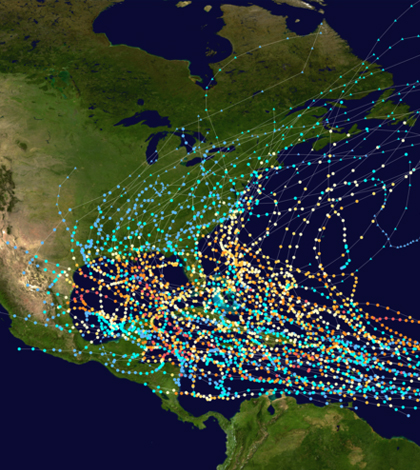Evolution of Hurricane observation tech saves lives

Tracks of tropical cyclones in the Atlantic Ocean whose names were retired due to their impact. (Credit: Titoxd)
Modern hurricane tracking technology helps prevent nearly 90 percent of potential hurricane related deaths, according to a Florida International University earth sciences professor writing in The Conversation. Hurricane monitoring has evolved from visually tracking the storms to using increasingly specialized equipment to forecast hurricane activity. The lives saved by better tracking have an economic value of $1 billion.
Three monitoring devices are especially helpful in predicting hurricane activity. Scatterometers give estimates for surface wind directions and speed. Stepped-frequency microwave radiometers use different wavelengths of light to view the ocean’s surface, estimating rain rate and wind speed. Dropsondes, packaged instruments, are dropped via parachute and tracked using GPS. Dropsondes measure the controlling winds around the hurricanes.
An added bonus is that the new technology can be transported via drones which could keep monitoring costs down.
Top image: Tracks of tropical cyclones in the Atlantic Ocean whose names were retired due to their impact. (Credit: Titoxd)




0 comments